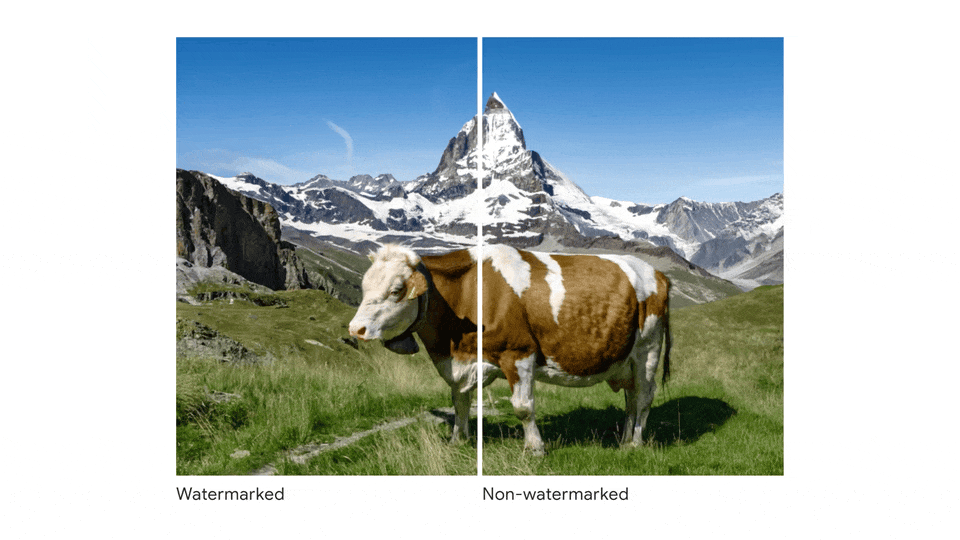DeepMind partners with Google Cloud to watermark AI-generated images
In partnership with Google Cloud, Google DeepMind (Google’s AI research division) is launching a tool for watermarking and identifying AI-generated images — but only images created by Google’s image-generating model.
The tool, called SynthID and available in beta for select users of Vertex AI (Google’s platform for building AI apps and models) embeds a digital watermark directly into the pixels of an image — making it ostensibly imperceptible to the human eye but detectable by an algorithm. SynthID only supports Imagen, Google’s text-to-image model, which is exclusively available in Vertex AI.
Google previously said it would embed metadata to signal visual media created by generative AI models. SynthID, obviously, goes a step beyond this.
“While generative AI can unlock huge creative potential, it also presents new risks, like enabling creators to spread false information — both intentionally or unintentionally,” DeepMind writes in a blog post. “Being able to identify AI-generated content is critical to empowering people with knowledge of when they’re interacting with generated media, and for helping prevent the spread of misinformation.”

Image Credits: DeepMind
DeepMind claims that SynthID, which it developed and partnered with Google Research (Google’s R&D team) to refine, remains in place even after modifications like adding filters to images or changing the colors of and highly compressing images. The tool leverages two AI models, one for watermarking and one for identifying, that were trained together on a “diverse” set of images, DeepMind says.
SynthID can’t identify watermarked images with 100% confidence. But the tool distinguishes between instances where an image might contain a watermark versus an image that is highly likely to contain one.
“SynthID isn’t foolproof against extreme image manipulations, but it does provide a promising technical approach for empowering people and organisations to work with AI-generated content responsibly,” DeepMind writes in the blog post. “This tool could also evolve alongside other AI models and modalities beyond imagery such as audio, video and text.”
Watermarking techniques for generative art aren’t new. French startup Imatag, launched in 2020, offers a watermarking tool that it claims isn’t affected by resizing, cropping, editing or compressing images, similar to SynthID. Another firm, Steg.AI, employs an AI model to apply watermarks that survive resizing and other edits.
But the pressure is ramping up on tech firms to provide a way to make it clear that works were generated by AI.
Recently, China’s Cyberspace Administration issued regulations requiring that generative AI vendors mark generated content — including text and image generators — without affecting user usage. And in recent U.S. Senate committee hearings, Senator Kyrsten Sinema (I-AZ) emphasized the need for transparency in generative AI, including by using watermarks.
In May at its annual Build conference, Microsoft committed to watermarking AI-generated images and videos “using cryptographic methods.” Elsewhere, Shutterstock and generative AI startup Midjourney adopted guidelines to embed a marker indicating that content was created by a generative AI tool. And OpenAI’s DALL-E 2, a text-to-image tool, inserts a small watermark on the bottom right-hand side of images that it generates.
But so far, a common watermarking standard — both for creating watermarks and detecting them — has proven to be elusive.
SynthID, like the other technologies that’ve been proposed, won’t be useful for any image generator that isn’t Imagen — at least not in its current form. DeepMind says that it’s considering making SynthID available to third parties in the near future. But whether third parties — especially third parties developing open source AI image generators, which lack many of the guardrails in generators gated behind an API — will adopt the tech is another matter altogether.




